International Steel Prices

US HRC Prices Move Nearly Even With Imports Again
Written by David Schollaert
October 5, 2023
US hot-rolled coil (HRC) and offshore product are nearing parity again after domestic prices moved higher this week and imports declined, according to SMU’s latest foreign vs. domestic price analysis.
Current State of Play
Domestic sheet prices rose this week after a five-plus-month slump on the heels of a price hike announced by Cleveland-Cliffs last week. The move, quietly followed by other US mills, comes as offshore hot band edged lower.
US tags increased by $25 per ton ($1.25 per cwt) week on week (WoW), while imports slipped by roughly $12 per ton on average over the same period.
The result: Imported product is now just about 4% more expensive than domestic material once freight and other costs are accounted for. That’s a shift from just last week when imports were nearly 11% more expensive.
SMU’s price for domestic HRC stands at $670 per short ton on average this week, up $25 per ton from last week. US HRC prices had fallen to their lowest level since early December 2022 but have reversed for the first time in nearly six months, according to our pricing tool. They are still down, however, $490 per ton since peaking this year at $1,160 per ton in April.
Methodology
This is how SMU calculates the theoretical spread between foreign HRC prices (delivered to US ports) and domestic HRC prices (FOB domestic mills): We compare the SMU US HRC weekly index to the CRU HRC weekly indices for Germany, Italy, and East and Southeast Asian ports. This is only a theoretical calculation. Import costs can vary greatly, influencing the true market spread.
We add $90 per ton to all foreign prices as a rough means of accounting for freight costs, handling, and trader margin. This gives us an approximate CIF US ports price to compare to the SMU domestic HRC price. Buyers should use our $90-per-ton figure as a benchmark and adjust up or down based on their own shipping and handling costs. If you import steel and want to share your thoughts on these costs, please contact david@steelmarketupdate.com.
Asian Hot-Rolled Coil (East and Southeast Asian Ports)
As of Thursday, Oct. 5, the CRU Asian HRC price was $508 per ton, down $5 per ton from the previous week. Adding a 25% tariff and $90 per ton in estimated import costs, the delivered price of Asian HRC to the US is approximately $725 per ton. The latest SMU hot rolled average for domestic material is $670 per ton.
The result: US-produced HRC is now theoretically $55 per ton cheaper than steel imported from Asia, a $31-per-ton swing WoW.
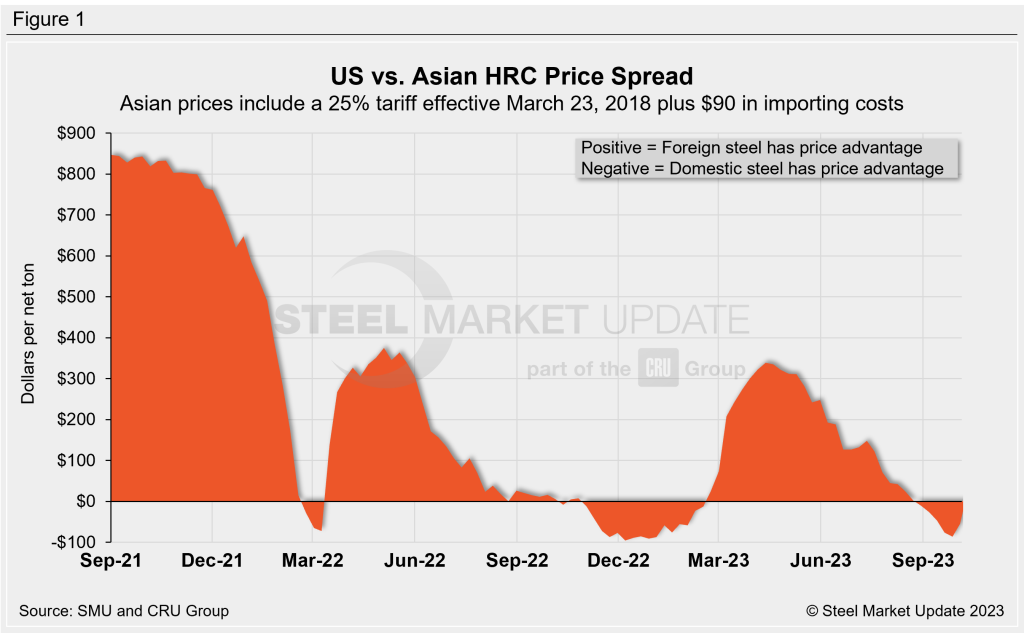
Italian Hot-Rolled Coil
Italian HRC prices fell $19 per ton this week to roughly $583 per ton, and down $59 per ton over the past month. After adding import costs, the delivered price of Italian HRC is in theory $673 per ton.
That means domestic HRC is now theoretically just $3 per ton cheaper than HRC imported from Italy. That’s a big difference from late September, when US prices were $49 per ton cheaper than prices for Italian hot band.
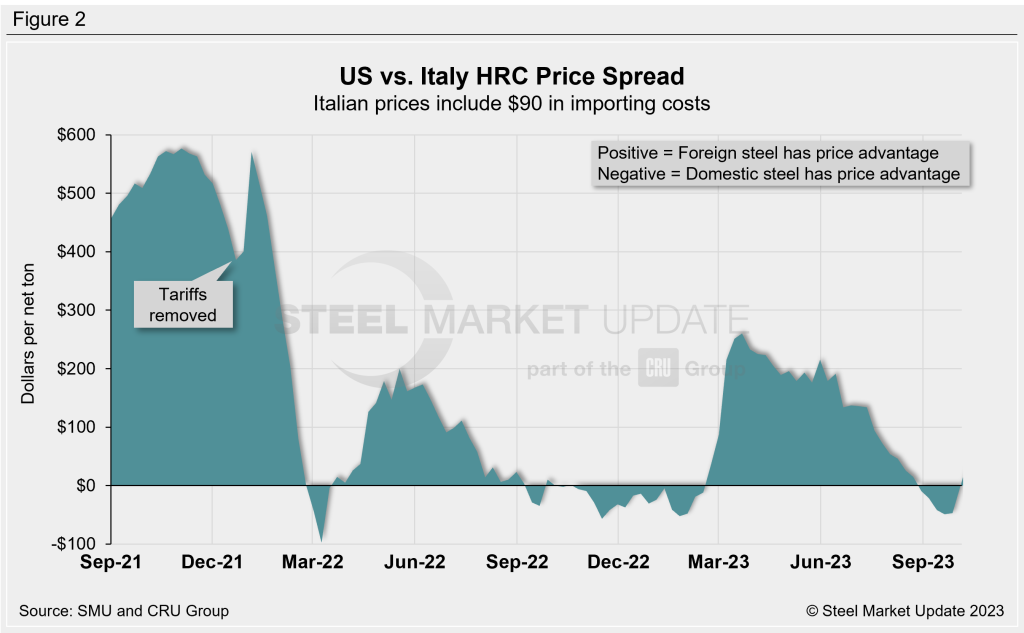
German Hot-Rolled Coil
CRU’s German HRC prices fell $12 per ton WoW to $611 per ton. After adding import costs, the delivered price of German HRC is in theory $701 per ton. The result: Domestic HRC is now theoretically $31 per ton cheaper than HRC imported from Germany.
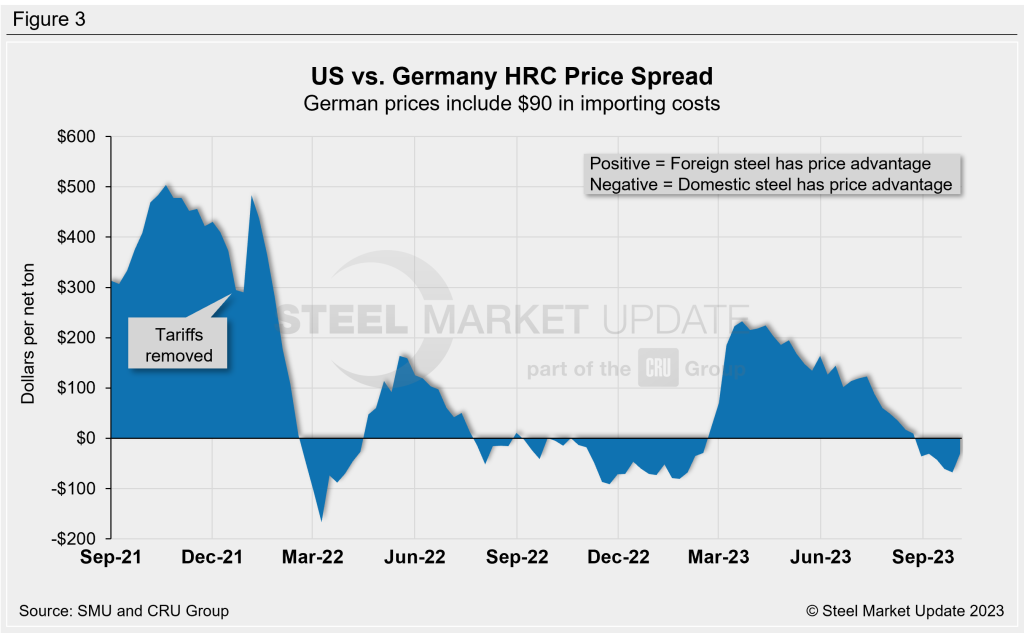
Figure 4 compares all four price indices. The chart on the right zooms in to highlight the difference in pricing from the second quarter of this year to the present.
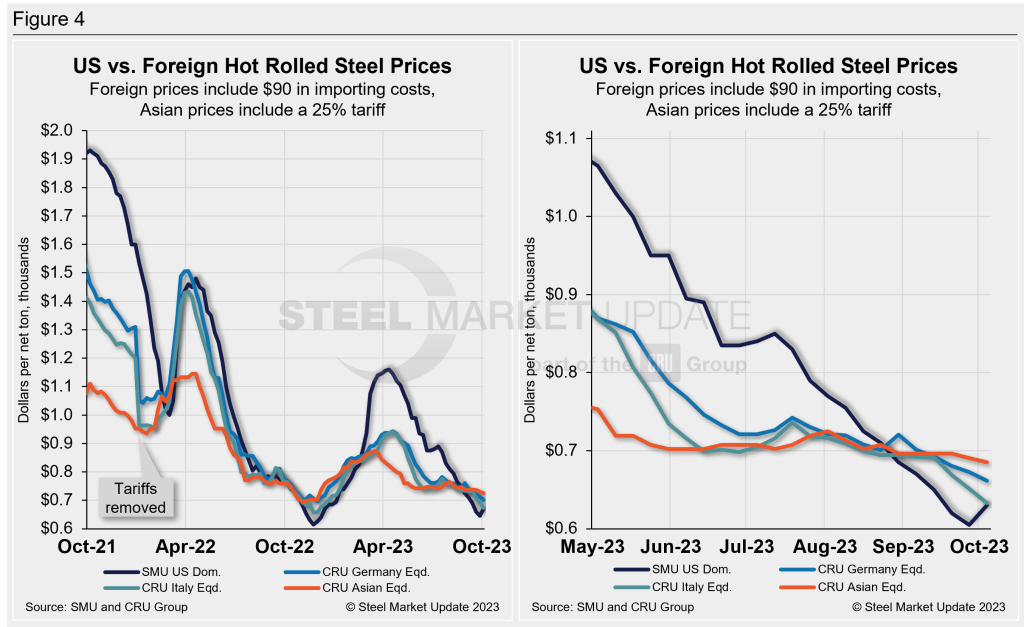
Notes: Freight is important in deciding whether to import foreign steel or buy from a domestic mill. Domestic prices are referenced as FOB the producing mill, while foreign prices are CIF the port (Houston, NOLA, Savannah, Los Angeles, Camden, etc.). Inland freight, from either a domestic mill or from the port, can dramatically impact the competitiveness of both domestic and foreign steel. It’s also important to factor in lead times. In most markets, domestic steel will deliver more quickly than foreign steel.
Effective Jan. 1, 2022, the traditional Section 232 tariff no longer applies to most imports from the European Union. It has been replaced by a tariff rate quota (TRQ). Therefore, the German and Italian price comparisons in this analysis no longer include a 25% tariff. SMU still includes the 25% Section 232 tariff on foreign prices from other countries. We do not include any antidumping (AD) or countervailing duties (CVD) in this analysis.

David Schollaert
Read more from David SchollaertLatest in International Steel Prices
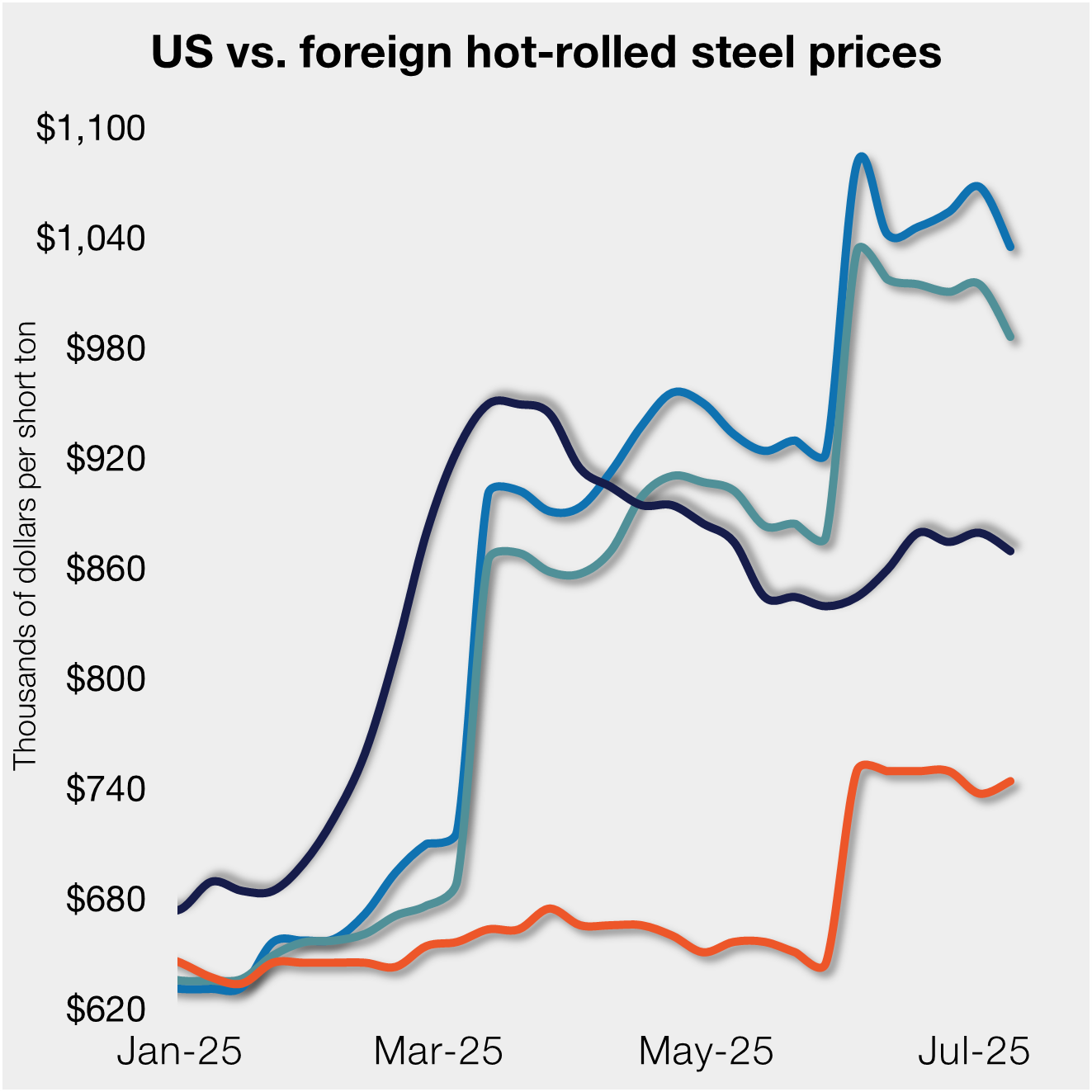
S232 tariffs keep US HR prices below imports from EU
Hot-rolled (HR) coil prices in the US ticked down this week but have fluctuated little over the past month. Stateside tags continue to trail imports from Europe, supported by Section 232 steel tariffs that were doubled in early June.

Doubled S232 tariff holds US HR prices below EU
David Schollaert presents this week's analysis of hot-rolled coil prices, foreign vs. domestic.

Higher US CR prices inch closer to EU, Japanese tags
US cold-rolled (CR) coil prices continued to tick higher this week, while offshore markets were mixed.

Stacked S232 keeps US HR prices below EU
US hot-rolled coil prices crept up again this week but still trail imports from Europe.

Doubled S232 lifts EU, Japanese CR prices over US tags
US cold-rolled (CR) coil prices edged up again this week, and most offshore markets moved in the opposite direction. But the diverging price moves stateside vs. abroad did little to impact pricing trends. The bigger impact was from Section 232, which were doubled to 50% as of June 3. The higher tariffs have resulted in […]
